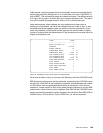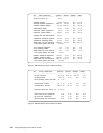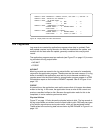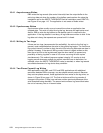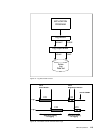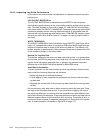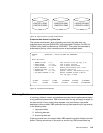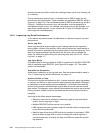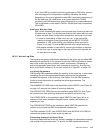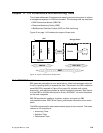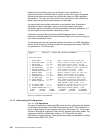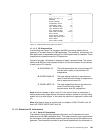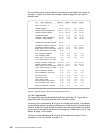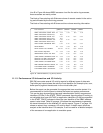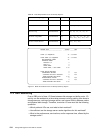DB2 I/O Operations 117
If you allow DB2 to create the archive log data sets on RVA disks, you can
take advantage of the compression capability offered by the device.
Depending on the type of application data DB2 is processing and storing in
the log data sets, you could obtain a very good reduction in DASD
occupancy with RVA and achieve good recoverability at a reasonable price.
This is explained in more detail in
DB2 for OS/390 and Data Compression,
SG24-5261.
Archive to Disk and Tape
DB2 V5 has introduced the option to archive one copy of the log to disk and
the other one to tape. This allows more flexibility than when archiving only
to tapes and disk space savings when compared to archiving only to disk.
• In case of unavailability of tape units, you can, in fact, cancel the
request for allocation (having previously set the WRITE TO OPER
parameter to YES in the Archive Log Installation Panel reported in
Figure 21 on page 70) and let DB2 continue with a single archiving.
• Disk space utilization is improved by reducing the number of data sets
for the dual copy of active logs to one copy of the archive log data set
on disk and one on tape.
10.5.2 Active Log Size
The capacity the system administrator specifies for the active log can affect DB2
performance significantly. If the capacity is too small, DB2 might need to access
data in the archive log during rollback, restart, and recovery. Accessing an
archive log generally takes longer than accessing an active log. An active log
which is too small is shown by a non-zero value in
A in Figure 41 on page 118.
Log Sizing Parameters
The following DB2 parameters affect the capacity of the active log. In each case,
increasing the value the system administrator specifies for the parameter
increases the capacity of the active log. See Section 2 of the
DB2 Installation
Guide,
for more information on updating the active log parameters. The
parameters are:
The NUMBER OF LOGS field on the installation panel DSNTIPL (see Figure 40
on page 115) controls the number of active log data sets.
The ARCHIVE LOG FREQ field on the installation panel DSNTIPL (see Figure
40) controls how often active log data sets are copied to the archive log.
The UPDATE RATE on the installation panel DSNTIPL (see Figure 40) is an
estimate of how many database changes (inserts, update, and deletes) are
expected per hour.
The CHECKPOINT FREQ on the installation panel DSNTIPN specifies the
number of log records that DB2 writes between checkpoints.
The DB2 installation CLIST uses UPDATE RATE and ARCHIVE LOG FREQ to
calculate the data set size of each active log data set.
CalculatingAverageLogRecordSize
One way to determine how much log volume is needed is to calculate the average
size in bytes of log records written. To do this, the DB2 system administrator



